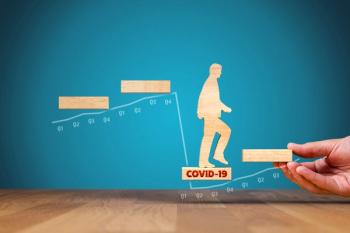
Pharmacists must be proactive to improve Medicare Part D Star Ratings
Starting next year, health plans that earn 3 or more stars will be able to continue to serve Medicare beneficiaries. Those with fewer than 3 stars will probably be eliminated from the Medicare system.
The CMS Star Ratings system, created in 2007, rates Medicare health plans annually on a scale of 1 to 5. Plans that receive a rating of 3 stars are considered average, while those that reach 4 are above average, and 5 are excellent. Starting next year, health plans that have 3 or more stars will be able to continue to serve Medicare beneficiaries, but those with fewer than 3 stars will probably be eliminated from the Medicare system.
So where does pharmacy come in? Pharmacies have a proactive role to play in five performance measures of the Medicare prescription drug plan (Part D) and three are directly linked to patient adherence to specific medications, said Hashim Zaibak, PharmD, of Hayat Pharmacy in Milwaukee, Wisconsin, who spoke at the 2014 National Community Pharmacists Association (NCPA) annual meeting in Austin, Texas.
Medication adherence to statin therapy, oral diabetes medications, and hypertension medications are part of the star ratings program and something that pharmacists need to know about.
If a pharmacist sees that a patient has filled their statin therapy twice and then stops, it is important to find out why. “If you have a patient who can’t afford the drug, then think about what other alternative you can offer them within that same [medication] class and talk to the doctor about having them change to a [more affordable] statin. Because if the patient stops after two fills, that will negatively affect the star ratings,” Zaibak said.
In terms of the newer oral diabetes medications, do your technicians know which drugs these are? “If the answer is no, you need to start training them. If you have a weekly or monthly meeting, share the lists of oral diabetes drugs with them,” he said.
The third category for medication adherence is the renin-angiotensin system antagonists (RASA) for hypertension control. “There had been a discussion about eliminating this measure in 2015, but CMS decided against it. So this still is part of the Part D measures for next year,” Zaibak said.
The fourth measure requires the addition of an ACE inhibitor or angiotensin-receptor blocker (ARB) for the treatment of hypertension in patients with diabetes. “You need to make sure that your pharmacists check for that when they verify prescriptions,” he said. “If the answer is no, what can you do to change that?”
The fifth performance measure calls for the elimination of high-risk medications in the elderly. “The list of high-risk medications is a little different from the Beers criteria. Do your pharmacists know what’s included in that list?” Zaibak asked.
By working with prescribers, you will be able to help ensure that patients have better outcomes and avoid medications that could be risky, Zaibak said.
When trying to improve your pharmacy’s performance for these five measures, pharmacists will have to identify patients who need extra help and figure out a system to provide counseling and education and fit it into your workflow, Zaibak said. Medication adherence solutions include dose simplification and medication therapy management.
“MTM is the best thing you can do to improve adherence, so your patients understand why it is important to take their medication every day,” he said. “It is the best return on investment where you spend 20 or 30 minutes with a patient and hopefully you get them to be more adherent to their medication.”
Zaibak said MTM combined with medication synchronization is a win-win for patients and his pharmacy. “We have improved adherence significantly and combining with MTM was an excellent combination,” he said.
Newsletter
Pharmacy practice is always changing. Stay ahead of the curve with the Drug Topics newsletter and get the latest drug information, industry trends, and patient care tips.




